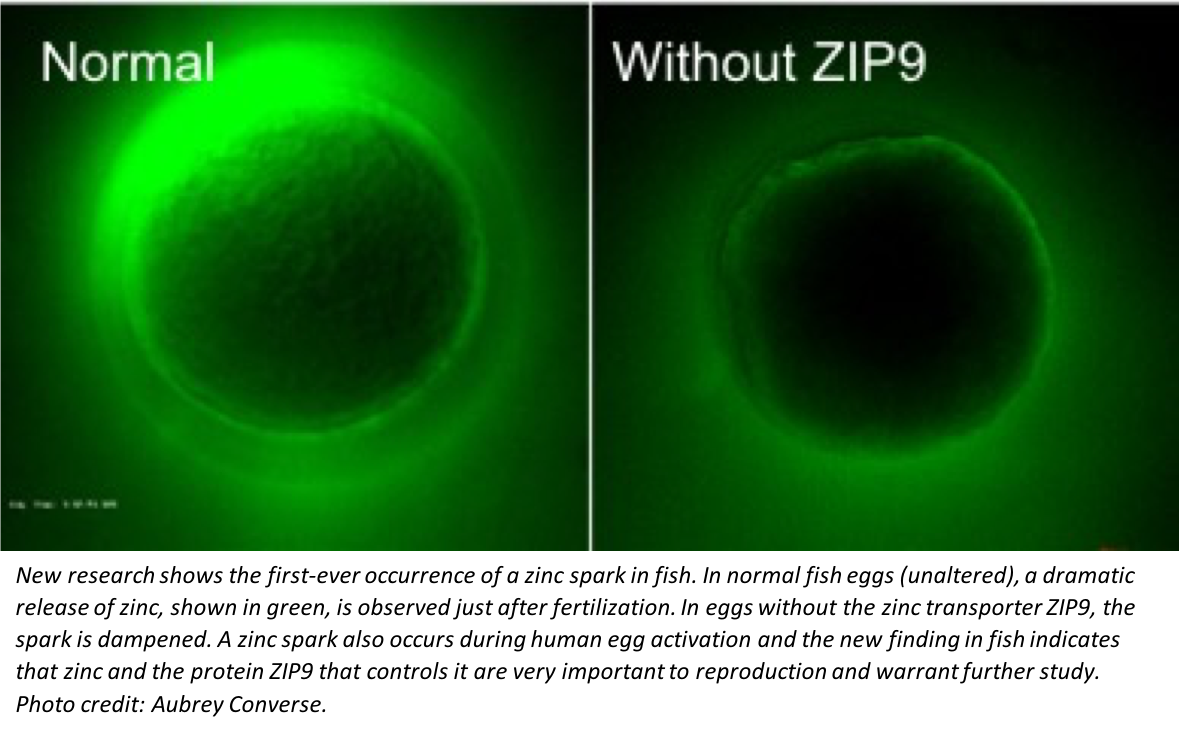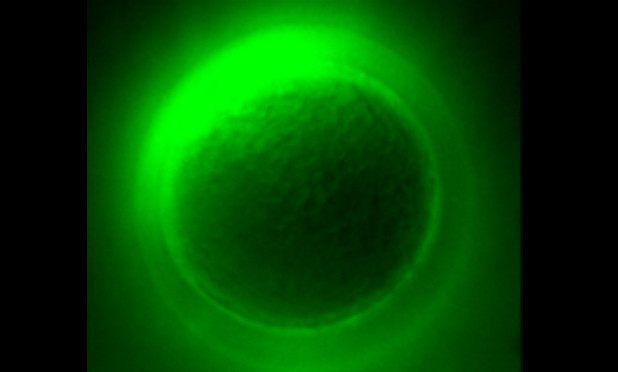It has been known for the last decade that zinc plays a critical role in reproduction in mammals, but a manuscript released today in Scientific Reports describe the first ever recorded evidence of a zinc spark in fish. A zinc spark is essentially an explosion of zinc from an egg that can be seen under a microscope using a fluorescent probe. The spark occurs when an egg is fertilized and its cortical vesicles are released, flooding the area around the egg with zinc. Physiologists think that the zinc helps to strengthen the egg membrane to stop additional sperm from getting into the egg.
To make this discovery, Drs. Aubrey Converse and Peter Thomas, researchers at the University of Texas Marine Science Institute, used CRISPR technology to create zebrafish without the ZIP9 zinc transporter for comparison with unaltered fish. Previous research by the team showed that ZIP9 acts as a zinc transporter in various cells types. Fish without ZIP9 released fewer eggs during spawning, many of which were not viable. Additionally, the eggs produced by fish without ZIP9 had smaller cortical vesicles containing zinc and showed very weak zinc sparks. These abnormal zinc sparks were associated with smaller diameter and lower viability of eggs.
A zinc spark also occurs in mammals, including humans and mice at fertilization. The new study documenting the presence of a zinc spark in fish means that the zinc spark phenomenon is likely a conserved developmental function and probably occurs in all vertebrates. The new finding will help scientists underscore the importance of zinc dynamics and the role of ZIP9 in reproduction and further add to a better evolutionary picture.
This research was supported by the H-E-B Endowed Chair in Marine Science Marine Toxicology/Reproductive Physiology.










